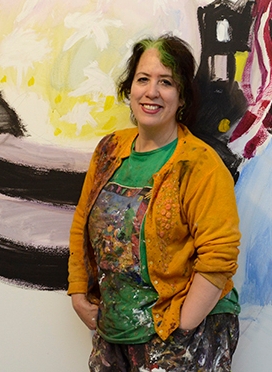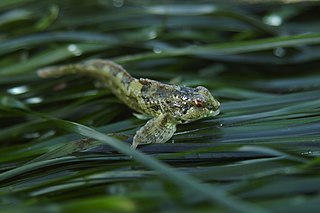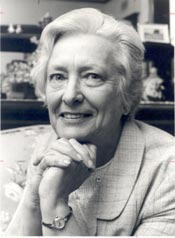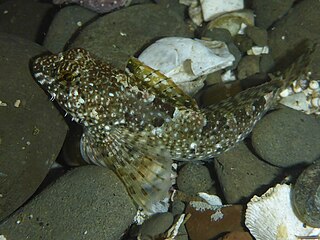Related Research Articles

The Great Barrier Reef is the world's largest coral reef system, composed of over 2,900 individual reefs and 900 islands stretching for over 2,300 kilometres (1,400 mi) over an area of approximately 344,400 square kilometres (133,000 sq mi). The reef is located in the Coral Sea, off the coast of Queensland, Australia, separated from the coast by a channel 160 kilometres (100 mi) wide in places and over 61 metres (200 ft) deep. The Great Barrier Reef can be seen from outer space and is the world's biggest single structure made by living organisms. This reef structure is composed of and built by billions of tiny organisms, known as coral polyps. It supports a wide diversity of life and was selected as a World Heritage Site in 1981. CNN labelled it one of the Seven Natural Wonders of the World in 1997. Australian World Heritage places included it in its list in 2007. The Queensland National Trust named it a state icon of Queensland in 2006.

The Great Barrier Reef Marine Park protects a large part of Australia's Great Barrier Reef from damaging activities. It is a vast multiple-use Marine Park which supports a wide range of uses, including commercial marine tourism, fishing, ports and shipping, recreation, scientific research and Indigenous traditional use. Fishing and the removal of artefacts or wildlife is strictly regulated, and commercial shipping traffic must stick to certain specific defined shipping routes that avoid the most sensitive areas of the park. The Great Barrier Reef is the largest and best known coral reef ecosystem in the world. Its reefs, almost 3000 in total, represent about 10 per cent of all the coral reef areas in the world. It supports an amazing variety of biodiversity, providing a home to thousands of coral and other invertebrate species, bony fish, sharks, rays, marine mammals, marine turtles, sea snakes, as well as algae and other marine plants.
Halifax Bay Wetlands is a national park at Halifax Bay in Queensland, Australia, 1179 km northwest of Brisbane.

Ethel Florence Lindesay Richardson, known by her pen name Henry Handel Richardson, was an Australian author.

A tide pool or rock pool is a shallow pool of seawater that forms on the rocky intertidal shore. These pools typically range from a few inches to a few feet deep and a few feet across. Many of these pools exist as separate bodies of water only at low tide, as seawater gets trapped when the tide recedes. Tides are caused by the gravitational pull of the sun and moon. A tidal cycle is usually about 25 hours and consists of one or two high tides and two low tides.
Joyce Steele was an Australian politician and one of the first two women elected to the Parliament of South Australia, the other being Jessie Cooper. Steele was elected to the House of Assembly and Cooper was elected to the Legislative Council at the 1959 election. Ironically, while South Australian women had been given the right to vote and stand for election—a right they had gained at the 1896 election—South Australia had been the last state to elect a female representative.

Wendy Sharpe is an Australian artist who lives and works in Sydney and Paris. She has held over 70 solo exhibitions nationally and internationally, been awarded many national awards and artist residencies for her work, and was an official Australian War Artist to East Timor in 1999–2000.
Barber Island is a tiny island just south of Great Palm Island, part of the Palm Islands group in Queensland, Australia. The Aboriginal name for this island is Boodthean. Barber Island is one of the ten islands in the local government area of the Palm Island Aboriginal Shire Council.
The Australian Marine Conservation Society (AMCS) is an Australian environmental not-for-profit organisation. It was founded in 1965 as the Queensland Littoral Society before changing its name to the Australian Littoral Society and then finally in 1995 to its current title. It works on protecting the health and vitality of Australia's coasts and oceans.

Wendy June Saddington, also known as Gandharvika Dasi, was an Australian blues, soul and jazz singer, and was in the bands Chain, Copperwine and the Wendy Saddington Band. She wrote for teen pop newspaper Go-Set from September 1969 to September 1970 as an agony aunt in her weekly "Takes Care of Business" column, and as a feature writer. Saddington had Top 30 chart success with her 1972 solo single "Looking Through a Window", which was written and produced by Billy Thorpe and Warren Morgan of the Aztecs. After adopting Krishna Consciousness in the 1970s she took the name Gandharvika Dasi. In March 2013 she was diagnosed with oesophageal cancer and died in June, aged 63.

Clinocottus globiceps, the mosshead sculpin or globe-headed sculpin, is a species of marine ray-finned fish belonging to the family Cottidae, the typical sculpins. This sculpin is found in the northeastern Pacific.

Clinocottus is a genus of marine ray-finned fishes belonging to the family Cottidae, the typical sculpins. They are nearshore benthic fishes native to the northeastern Pacific Ocean. They are mentioned as sharpnose sculpins.

Artedius is a genus of marine ray-finned fishes belonging to the family Cottidae, the typical sculpins. These fishes are found in the northern Pacific Ocean.

Oligocottus is a genus of marine ray-finned fishes belonging to the family Cottidae, the typical sculpins. These sculpins are found in the northern and eastern Pacific Ocean.
Judith Gay West is an Australian scientist currently working as an executive director of the Australian National Botanic Gardens. West holds a doctor of philosophy (PhD) by thesis on "A taxonomic revision of Dodonaea (Sapindaceae) in Australia". She completed her PhD in 1981 from the University of Adelaide, South Australia.

Helen Alma Newton Turner was an Australian geneticist and statistician. She was a leading authority on sheep genetics and worked at the Commonwealth Scientific and Industrial Research Organisation (CSIRO) for 40 years.

The woolly sculpin is a species of ray-finned marine fish belonging to the family Cottidae, or the typical sculpins. It is found in the eastern Pacific Ocean, where it occurs along the coastline of California south to Baja California.

The tidepool sculpin is a fish species in the sculpin family Cottidae that ranges from the Bering Sea to southern California. Individuals reach up to 8 cm (3 in) in length and are common in tidepools.
ACIL Allen is an Australian economics and policy consulting firm, specialising in the use of applied economics and econometrics to analyse, develop and evaluate policy, strategy and programs. It is the result of the April 2013 merger between Allen Consulting Group and ACIL Tasman. ACIL Allen employs 65 consultants in offices in Sydney, Melbourne, Canberra, Brisbane, Perth and Adelaide.

Mavis Ngallametta, née Marbunt, was an Indigenous Australian painter and weaver. She was a Putch clan elder and a cultural leader of the Wik and Kugu people of Aurukun, Cape York Peninsula, Far North Queensland. Her work is held in national and state collections, including the National Gallery of Australia, Canberra; Art Gallery of New South Wales, Sydney; Art Gallery of South Australia, Adelaide and Gallery of Modern Art, Brisbane.
References
- 1 2 3 4 5 6 "Craik, Wendy". Encyclopedia of Australian Science and Innovation. Retrieved 1 March 2022.
- ↑ Steele-Craik Audrey Mavis : Service Number 350070 : Date of birth 06 Jul 1918 : Place of birth Unknown : Place of enlistment Unknown : Next of Kin ION ERNEST. National Archives of Australia. 1939–1948.
- 1 2 3 "The Wisdom Interviews: Wendy Craik". ABC Radio National. Peter Thompson (interviewer). 2 August 2002. Retrieved 1 March 2022.
{{cite web}}: CS1 maint: others (link) - 1 2 Connors, Tom (9 December 1995). "Features: Leading farmers into the future". The Canberra Times . Vol. 71, no. 22, 150. Australian Capital Territory, Australia. p. 52. Retrieved 2 March 2022– via National Library of Australia.
- ↑ "Commonwealth scholarship winners announced". The Canberra Times . Vol. 40, no. 11, 325. Australian Capital Territory, Australia. 29 November 1965. p. 13. Retrieved 1 March 2022– via National Library of Australia.
- 1 2 3 "Craik, Wendy". The Encyclopedia of Women and Leadership in Twentieth-Century Australia. Retrieved 1 March 2022.
- ↑ "Prizewinners (30 June 1973), Australian National University", Report of the Council, Govt. Print. Office (154 of 1973): 34, 30 June 1973, ISSN 0572-1318
- ↑ "Wendy Craik, Senior Associate". AITHER: Advisors In Water Policy Management, Infrastructure & Natural Hazards. Retrieved 1 March 2022.
- ↑ Craik, Gwenneth Jean Steele (1978), A further investigation of the homing behaviour of the intertidal cottid, Oligocottus maculosus Girard, G. J. S., Craik, retrieved 1 March 2022
- ↑ "Letters to the Editor". Torres News . No. 577. Queensland, Australia. 21 November 2003. p. 4. Retrieved 2 March 2022– via National Library of Australia.
- ↑ "Advisory Board: Dr Wendy Craik AM" (PDF). 66 White Street. Charles Sturt University. August 2009. p. 5. Retrieved 1 March 2022.
- ↑ "Who we are". Climate Change Authority. Retrieved 1 March 2022.
- ↑ "Reserve Bank Board". Reserve Bank of Australia. Retrieved 1 March 2022.
- ↑ "Dr Wendy Craik". It's an Honour. 1 January 2001. Retrieved 1 March 2022.
- ↑ "Dr Gwenneth Jean Craik". It's an Honour. 26 January 2007. Retrieved 1 March 2022.